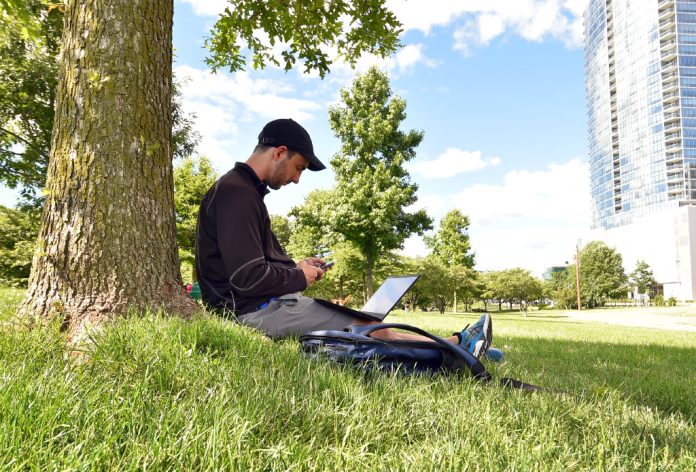STAMFORD – It was a proposal in November; now it’s in the budget for next year and people are talking about what it can do.
Taking an inventory of all the trees on the City of Stamford’s $250,000 property would yield a number of benefits — including determining which trees to plant in the future and savings on maintenance — proponents of the idea said a virtual meeting on Tuesday evening.
Melanie Hollas, deputy chair of the city’s Parks and Recreation Commission, said trees should be considered “vital urban infrastructure.”
“Funding for this resolution would help Stamford public parks maintain a healthy urban forest,” Hollas said. “Our public parks are an essential piece of infrastructure that has become evident in recent years of heavy use during the pandemic.”
The proposal appears to be gaining momentum and has already been backed by members of the House of Representatives through a non-binding resolution passed in November directing Mayor Caroline Simmons to allocate funds to the inventory.
That resolution also called for a water tanker truck, an additional park attendant, and the planting of new trees in downtown Stamford.
Simmons included the item in her proposed capital budget of $91.38 million, which differs from the much larger operating budget, which is more concerned with day-to-day expenses.
On Tuesday night, members of the public were invited to share their thoughts on both the capital and operating budgets during a joint meeting of the Council’s finance committee and tax committee — and many spoke out in favor of keeping tree inventory in the budget. The city’s land use bureau has tried unsuccessfully to fund such an inventory for the past decade.
The geographic information system, or GIS, would take an inventory of all trees on city paths and in major city parks such as Cove Island, Cummings Park, West Beach, Kosciuszko, and Scalzi. It would record each such tree and include information on the tree species, condition, size, and proximity to utilities, as well as a picture of the tree.
An inventory would also provide details on the ecological benefits of the city’s trees, e.g. B. how much stormwater runoff they prevent.
The project description in the city budget states, “The city has spent millions of dollars removing trees related to storm damage over the past 10 years. “
Senior city park planner Erin McKenna was one of those who advocated for the tree directory.
“The citizens of Stamford cherish their parks and trees,” she said.
She argued that compiling a catalog of the city’s trees could come with a financial reward, since the US Department of Agriculture’s Forest Service has provided $1.5 billion in grants for tree planting in the city, forest planning and management in disadvantaged communities.
“If we have a really good street tree inventory, a really good case, and a plan of what we’re going to do with that money, we can get grants that are focused on our city and have a great urban forest,” McKenna said.
Mike Moore, the vice president of operations for the Stamford Downtown Special Services District, said the inventory will inform future tree plantings that will contribute to a “healthy canopy.”
He said a consultant recently inventoried the city’s downtown trees, with the city and the DSSD split a cost of about $6,500. According to the then DSSD President David Kooris, 617 trees and 63 stumps or pits were cut down.
Stamford Parks and Recreation Director Kevin Murray told the Treasury Department during a recent budget presentation that it costs about $700 to plant a tree on average. He said he’s requesting about $50,000 over the next fiscal year to plant 71 trees in city parks.
“We can’t be a great city without great parks that include trees,” Hollas said.
www.stamfordadvocate.com
https://www.stamfordadvocate.com/news/article/urban-forest-stamford-city-debates-250k-tree-17880739.php















